This website uses cookies so that we can provide you with the best user experience possible. Cookie information is stored in your browser and performs functions such as recognising you when you return to our website and helping our team to understand which sections of the website you find most interesting and useful.
The phoenix-like revival of Kinsman Eades after the 2020 wildfires
The devastating effects of Napa wildfires in 2020 almost brought boutique Napa producer Kinsman Eades to its knees, however the tenacity of its husband-and-wife team, Nigel and Shae Kinsman, and the following their terroir-focus single vineyard wines have built in a short time, proved a huge strength.
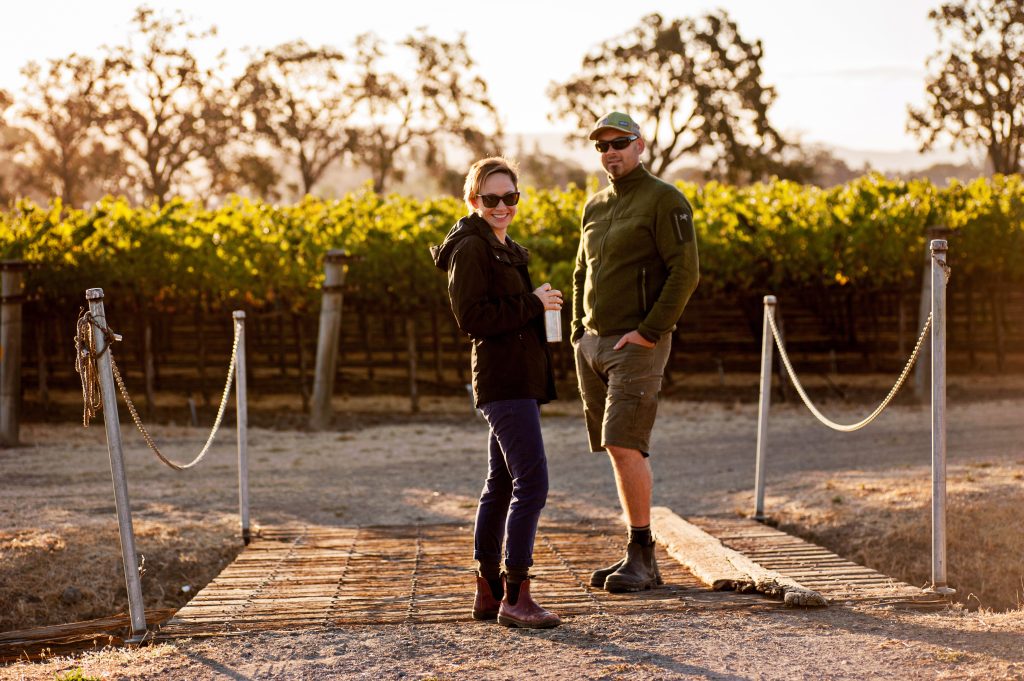
The wildfires across Napa in 2020 impacted the couple “on many levels”, according to Nigel and Shae Kinsman. The duo, who originally come from Australia but have spent a decade living and working in Napa Valley, were evacuated from their home in St. Helena for two weeks during the height of the blaze.
Soon afterwards, they made the tough decision not to produce any of their single-site Cabernets due to the effect of smoke taint, for as Shae points out, “we’re Australians, we have a fair bit of insight into what smoke does to grapes.”
They did however bottle a small parcel of Syrah, offered by Antica Terra’s winemaker Maggie Harrison, and a Chenin Blanc under a different label, for as Shae points out, “we don’t have a huge library to pull out in the event that we didn’t have any 2020 to sell. We also don’t have investors on board and so that cash flow for us in 2023 was very, very important.”
But such is the following of their premium, age-worthy cabernets that the team were able to draw on the support of eager buyers.
“Many of our clients emailed us and asked ‘how can we help? We realise you’ve got a really big gap here but we want to see you guys succeed’,” Nigel explains. “One of the only things we could do was to bring forward a release and so Shae decided to offer a future’s release to only those that had previously purchased before.”
The result was that 94% of customers who had previously bought from Kinsman Eades stepped up and paid their full allocation – and although Shae recognises this was a “one-off solution to a year with no cash flow”, it is a huge testament to the wines, and their customers’ belief in them.
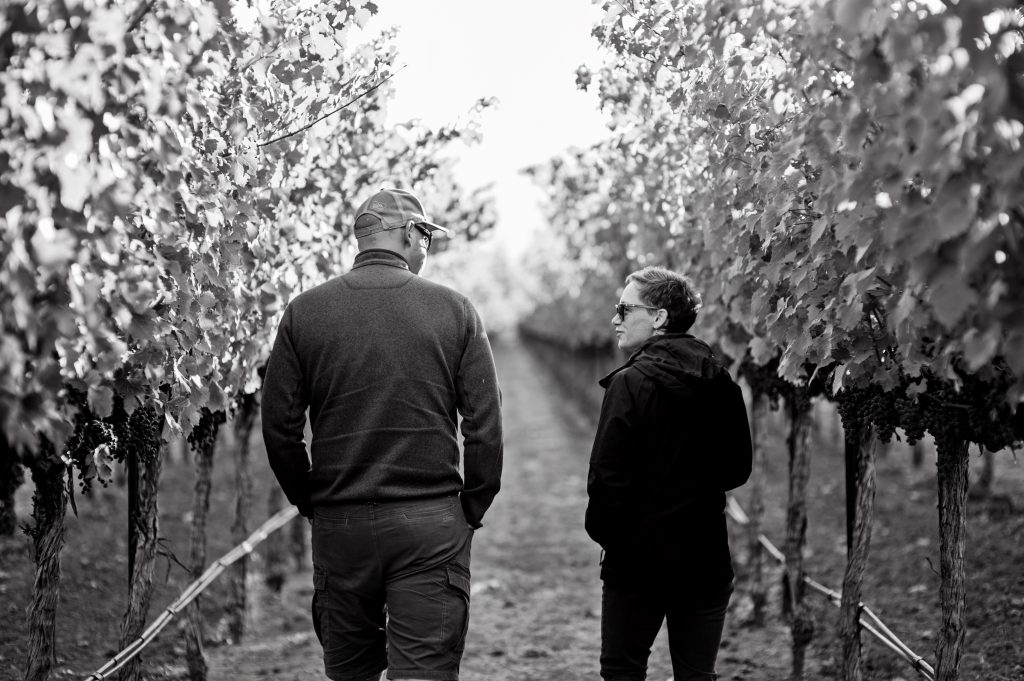
The duo have only been making single-vineyard wines under their own label since 2016, debuting their wines in 2019, so how has it established such a strong following in such a short time?
The answer lies in their long experience and focus on terroir wines – Nigel has worked in some of Australia’s top wineries (Petaluma, Cullen Wines, Mount Langi Ghiran), as well as in at the Tolaini Estate in Tuscany, where he worked alongside Michel Rolland, before moving to Napa to be the winemaker at Araujo Estate Wines. Meanwhile Shae’s experience in the hospitality industry, in wine distribution and as the general manager of cult Napa producer Abreu Vineyards perfectly complements his skill-set. Their independence and restrained approach to winemaking bring out the strong identity of each of the wines in the portfolio, highlighting the diversity of terroir within Napa Valley.
Above all, Kinsman Eades is about specific single vineyard sites that the duo are passionate about, and while the dream may be to have their own vineyards and a winery (“I can think of nothing better than waking up in the morning kind of rolling out of bed with coffee in hand and walking down to the winery, doing my pump overs and just getting going with the day,” Nigel muses), the cost of land in Napa is prohibitive. But the fruit source is “critical” so they only partner with growers and vineyard owners who share their vision and allow Nigel a huge amount of independence in the vineyard.
“It’s really important that our owners or growers are really partners so that we can work together as a team to try and achieve the style and quality that we’re looking for,” he explains. “What that allows us to do is really maximise what we’re doing in the vineyard and pick and choose being very selective.”
He is, he says, “one of those winemakers that probably spends more time – or at least I’d like to spend more time – in the vineyard than I do in the actually winery.”
“I really believe that a winemaker can maybe add two or three percent of quality to grapes once they come into the winery, so if we haven’t done all of our work upfront in the vineyard that are in trouble,” he smiles.
This being said, being attentive in the winery and knowing when to “step back and allow the fruit to do its thing” is key.
“Ultimately you have to let them be who they are,” Shae notes. “Nigel is very judicious with his use of oak, he is not making big, overblown styles of Cabernet. Our wines reflect beautiful freshness and really, really speak to the place they came from.”
Terroir-focus
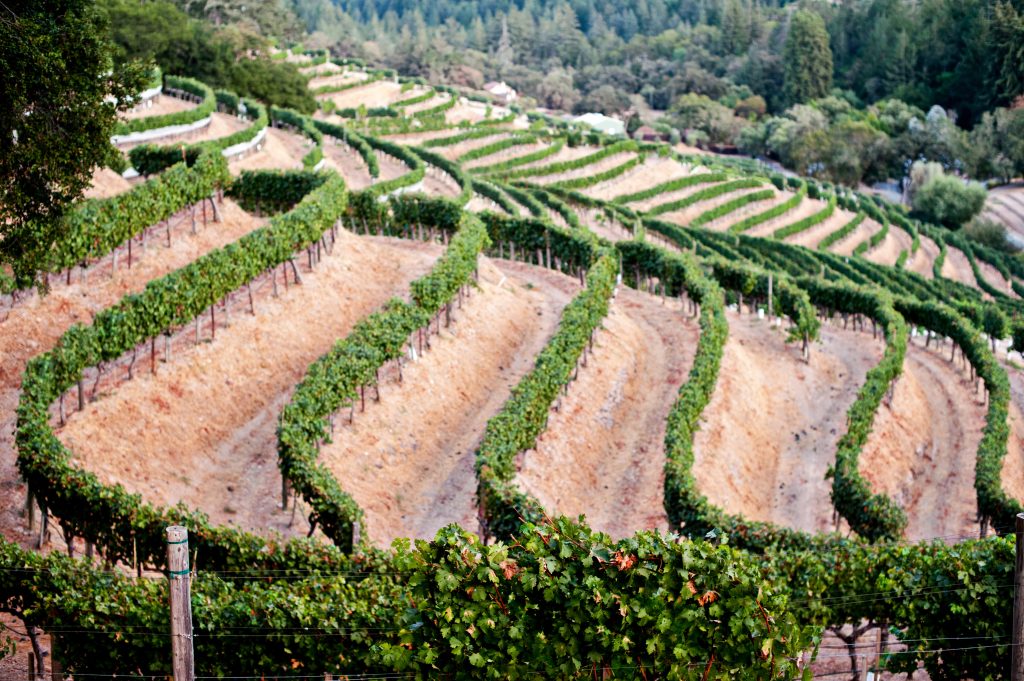
The fruit is sourced from four sites: Vine Hill Ranch in Oakville, the former Reverie Vineyard in Diamond Mountain, Sleeping Lady Vineyard in Yountville, and Geeslin Vineyard in Calistoga, which has contributed to the Araujo Estate cabernets for over 30 years.
And a tasting of three Kinsman Eades wines – Rhadamanthus from Diamond Mountain, Anjea from Sleeping Lady and La Voleuse de Chagrin from Geeslin, is effectively “a study in terroir because they are so individually expressive,” Shae notes. “You can really see the difference between three different soil types and three different climates.”
The unusual site on Diamond Mountain (which faces East unlike most of vineyards, which are west-facing, so it gets a lot of sunlight) is “remarkable” Nigel says, made of “decomposed volcanic ash and rhyolite”, which is almost pulverised in summer, and very high in potassium. The vineyard itself is planted with a heritage selection of Cabernet clones that were planted back in ’89 and ’90 “so those vines have got some considerable age on them now”.
“Whilst it tends to be quite tannic in its framework, because of the slightly elevated pH of the wine, coming from those higher potassium soils, we see this really strong mid-palate density that offers up an apparent sweetness to the wines,” he says. “And as a winemaker, you can load a lot of framework and structure into wine while still keeping it elevated, juicy, quite dense on the palate. The site is also surrounded by forest giving an influence of wild sage.”
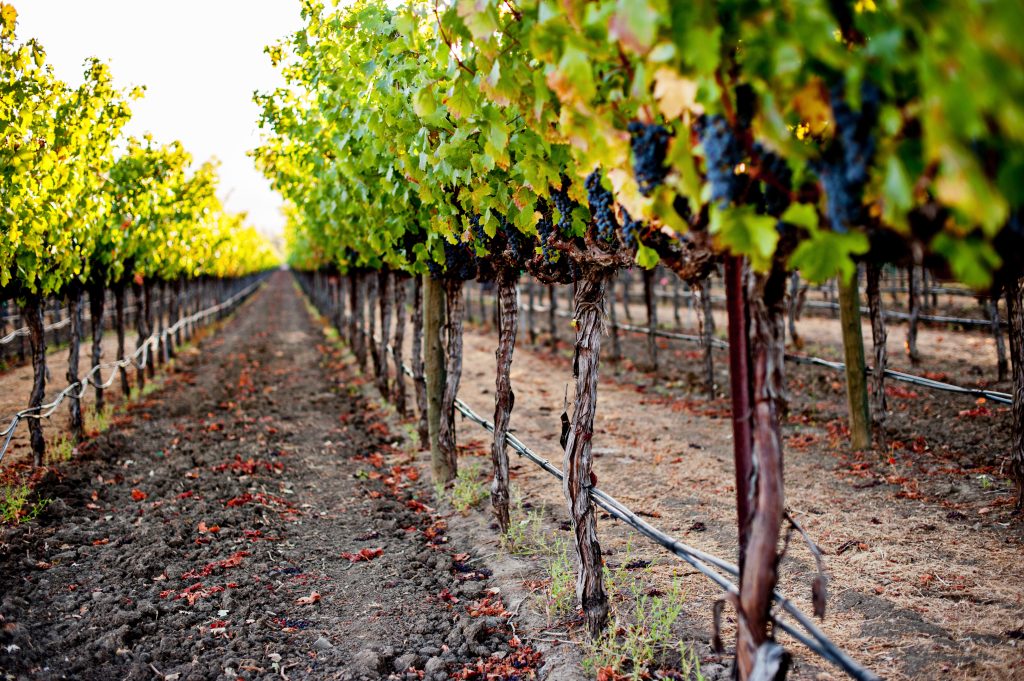
The soil at Yountville is “wildly different”, with a lot more gravel and some clay as you get down towards the highway on the valley floor, which fractures when it dries out. Another vineyard that’s old for Napa (although not by Australian standards, Nigel points out) it is at a lower elevation at the southern end of Napa Valley, much closer to San Francisco Bay which has a cooling influence that tends to “hang around a lot longer in your field” than more northerly Diamond Mountain.
While Radamanthus has “all these beautiful dark fruit, amazing dried savoury herbs” that “kind of lounges on your palate – even though it does have a higher level of tannin the quality of the tannin is much finer,” Anjea is quite austere, more linear, beautifully structured and quite elegant, Nigel argues, although it offers “this amazing kind of sanguine character”.
While some black fruit characters can be found in the Anjea, “there’s more of this crunchy almost reddish freshness,” Shae adds. “And we always recognise this beautiful perfume and almost Turkish Delight character.”
Meanwhile, the Geeslin vineyard is a tiny vineyard, only 1.3 acres, which is contiguous and immediately adjacent to the Eisele vineyards. These vineyards used to be leased by Araujo Estate, where Nigel worked between 2010-2015, but have supplied Nigel and Shae, who have become great friends with the owners, since 2018. The vineyard sits on the banks of the Simmons Canyon Creek, where the river has meandered for hundreds of years, leaving cobblestones “the size of cantaloupe”, with vines growing “on river rock and sand and nothing else”, Nigel says.
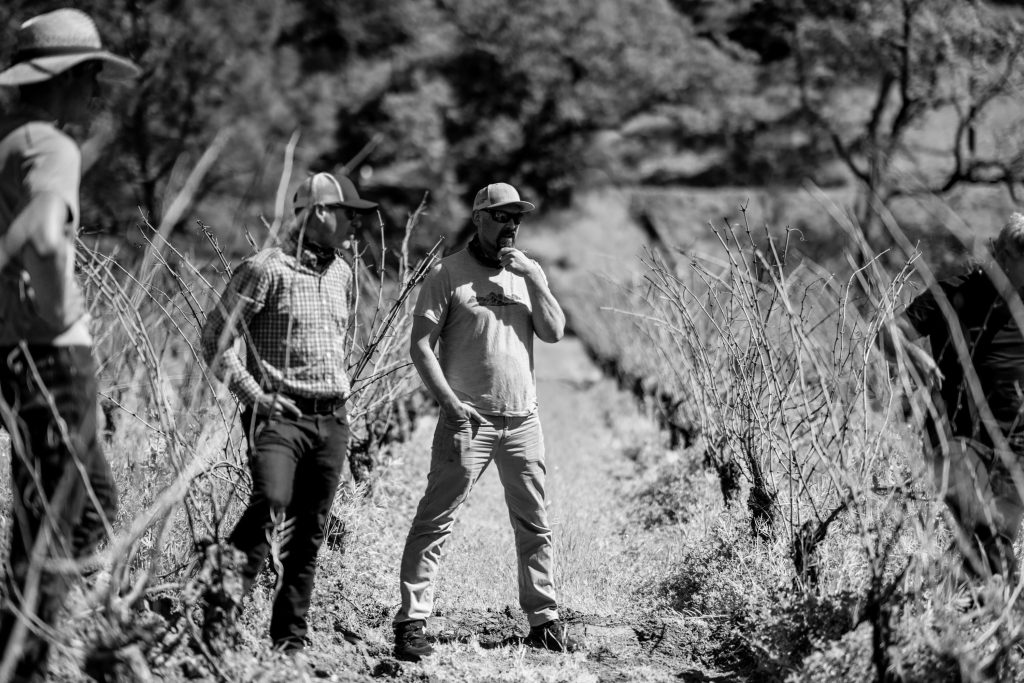
However, in 2020 the team made the tough decision to replant the Geeslin vineyard, not because of the smoke taint – “it wasn’t very smoky at all,” Nigel explains – but because they felt the 30-year-old vines were in decline and it seemed the natural moment to do so. Next year will see its first small crop.
“It is one of our favourites, just because of the history I have with Eisele Vineyard and because I love that Cabernet clone (Eisele clone cabernet on St George rootstock) and so we’re looking forward to that wine coming back,” Nigel explains. “It produces a very structured wine because that’s what I gravitate towards, but it’s a very delicate and gentle framework.”
Organic growth
While very focused on quality and careful sourcing from very specific vineyards, Nigel and Shae argue they haven’t been “overly strategic” in building the business.
“We bootstrapped this business, we started very, very small, but it’s been very organic,” Shae explains.
In 2016, the team produced fewer than 200 cases, rising to around 750 by the 2019 vintage. Including the new single-site Sauvignon Blanc 2021 from Rancho Pequeno in Oakville (the first Sauvignon Blanc to be released under the Kinsman Eades label), this year has seen the release of over 1,000 cases.
“We’re still small fry,” Shae says. “But by growing organically, we have been able to manage independently.”
And that independence is fierce, with Nigel and Shae doing “virtually 100% of everything”. While this may not be sustainable forever, “right now, people are feeling like they’re getting a piece of us when they’re buying into our brand and drinking our wines. That’s really resonated strongly with everyone,” he says.
“It’s our dream. It’s our passion. We’ve just been very focused on connecting with people and telling our story and making amazing wines that we believe in, and vineyards that speak to us.”
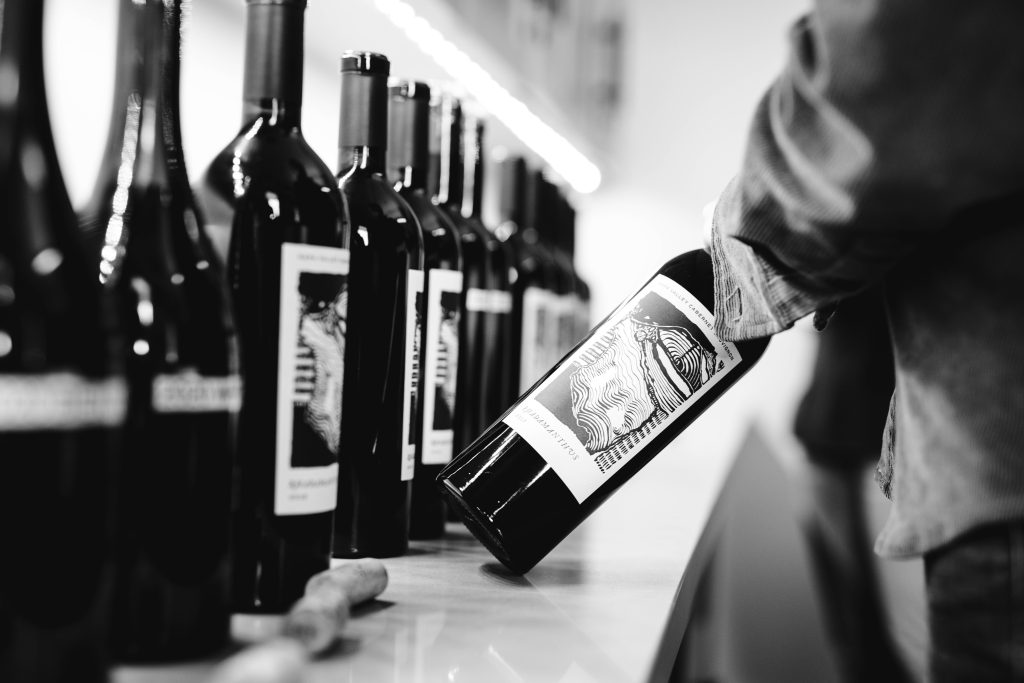
Looking ahead, the team have started to increase production, both increasing the number of vineyard sources as well as looking outside of Napa.
“It’s tough for us to mitigate the risk that is inherent in doing business in Napa in this day and age – with the threat of wildfires that’s really challenging,” Shae notes, ruefully.
However, this was one reason for expanding from its core Cabernets into Sauvignon Blanc.
“It’s important to recognise the new role that white wine is going to play in Napa Valley,” Nigel explains. “White grapes are harvested much earlier, so there’s a much lower risk of fires happening early in the season, in August and early September when the whites are normally harvested. Plus, there’s less propensity for whites to show smoke taint if there was a very light exposure to smoke as well.”
And so far, the response to the Sauvignon Blanc has been similar to the reds. “It sold out in less than a week,” Nigel says.
Having risen from the ashes of an incredibly challenging 2020, it seems that Nigel and Shae have built a firm foundation for Kinsman Eades’s continuing growth.
Kinsman Eades’s wines are available in the UK from importer Pol Roger Portfolio.
Related news
A 'challenging yet surprising' vintage for Centre-Loire in 2024

